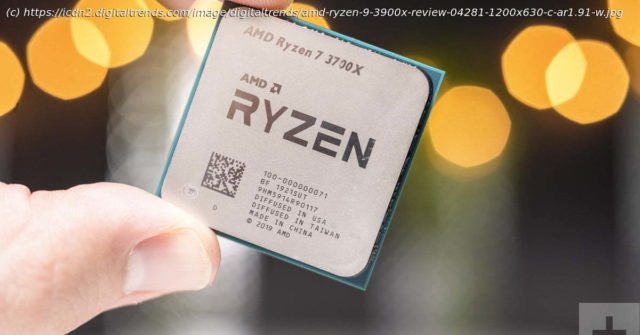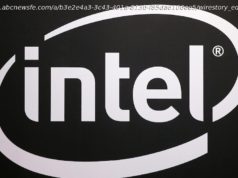AMD Ryzen 4000 CPUs promise a lot and could bring the fight to Intel’s dominance in mobile like never before. Here’s everything we know about Ryzen 4000 so far.
Ryzen 3000 CPUs were a landmark achievement for AMD. Now, with AMD launching its latest eight-core Ryzen 4000 mobile processors, the company is intensifying its competition with Intel’s desktop and laptop silicon. The goal for AMD is to release laptops that are just as powerful as they are thin using the U-series Ryzen 4000 processors, as well as performance-driven notebooks powered by beefier Ryzen 9 4900H and Ryzen 9 4900HS chips.
As has been the case with the past few generations of AMD’s Ryzen processors, the 4000-series will be made up of current-generation architecture mobile processors and new-generation architecture desktop chips, with launches split between the early and later portions of the year.
Here’s everything we know about AMD Ryzen 4000 CPUs.
AMD debuted the first Ryzen 4000 CPUs at CES 2020, where it showed off a new generation of mobile accelerated processing units (APUs). That’s Zen 2 CPU cores (found in Ryzen 3000 desktop CPUs) paired with Vega graphics cores.
A full range of chips was announced, from the low-end to the high, and they will begin showing up in laptops in the coming months from a range of manufacturers, with two of the first cited models being the Lenovo Yoga Slim 7 and Asus Zephyrus G14. The Yoga Slim 7 will launch with a 14-inch display at a price of $850. Here, you’re getting an eight-core Ryzen 7 4700U processor in a 2.2-pound form factor designed to compete against ultrabooks powered by Intel’s processors. Dell’s Inspiron 14 7000 2-in-1 convertible will also come in Ryzen 4000 configurations, and Lenovo also announced that a wide selection of its ThinkPad commercial notebooks can also be configured with AMD’s mobile processor.
Mobile gamers will be drawn to AMD’s flagship Ryzen 4000 mobile processors, including the Ryzen 9 4900H and 4900HS CPUs. Both chips are designed to take on Intel‘s Core i9 silicon in the high-end mobile gaming space. Laptops with AMD’s Ryzen 9 4900H and 4900HS are due this spring.
It’s been rumored that AMD had delayed its desktop Ryzen 4000 CPU launch. The Zen 3-based processor was previously believed to debut later this year, likely around the Computex trade show. However, because of the success of the existing Ryzen 3000 series for desktop, Digitimes reported that the launch of desktop Ryzen 4000 has been postponed to early 2021. Additionally, with rival Intel’s gap in its product roadmap in the enthusiast space, AMD may feel little pressure to launch its Ryzen 4000 products so soon. Instead, the company may be using the new XT series as a stopgap to squeeze more life out of the 3000 series.
Given that the Ryzen 4000 chipsets have not been announced, we do not have any information on pricing, but we would expect a similar mark-up to the current Ryzen 3000 series, with CPUs ranging in price from $100 APUs, all the way up to around $750 for the most capable multi-threaded CPUs.
Ryzen 4000 series CPUs, like Ryzen 3000 before them, will use a combination of two architectures throughout the range. The new Ryzen 4000 mobile CPUs will leverage the existing Zen 2 architecture just as the Ryzen 3000 desktop CPUs did, though in a different manner. Where the latter used a chiplet design, whereby CPU cores are portioned into miniature chiplets and paired with a larger I/O die, the Ryzen 4000 Zen 2 mobile CPUs are built using a more traditional single monolithic die.
AMD claims that the benefits of the chiplet design were far less notable on a laptop CPU, and it opted to integrate more elements — like LPDDR4X and low power audio — onto its monolithic die design.
This should mean greater power efficiency since the I/O die won’t be present and require its own power. Cache will be reduced, however, and there is the possibility of additional memory latency due to an uncoupling of the infinity fabric with system memory.
Zen 2 on Ryzen 4000 mobile chips will still be a major upgrade over existing Ryzen 3000 mobile APUs based on the Zen+ design, though. It drops the process node size from 12nm to 7nm and has a number of architectural efficiency improvements. Similar to Zen 2 desktop chips, the first Ryzen 4000 laptops will feature a higher instructions per clock of 15% and increased base and boost clock frequencies.
The eight mobile cores are split into two CCX units, with L3 memory reduced to 4MB per CCX from 8MB on the desktop design. Thanks to a 7nm design, AMD claims that it is able to reduce power consumption on active and idle modes. Latency has also been lowered, so laptops benefit from faster boot time and snappier applications, along with better battery life.
In early test results released by AMD, the Ryzen chip on a Lenovo Yoga Slim 7 bested a comparable Intel Core i7-1065G7 system in web browsing and graphics activity, with battery life being comparable. In idle time, however, AMD’s system still loses by 7.5 hours when compared to Intel’s connected standby.
AMD may be working on optimizations for improved battery performance. A leak of an unannounced — and potentially shelved — Lenovo Legion 5 gaming laptop published by Notebook Check suggests that the AMD variant could have double the battery life of a comparable Legion 5 configuration equipped with Intel’s Comet Lake-H CPU. Lenovo’s leaked MobileMark 2018 battery tests showed that the AMD version can get up to 13.5 hours of battery life, versus 7.7 hours for the Intel version. If these benchmarks are accurate, this will be hugely beneficial to gamers on the go and creatives who need to use a mobile workstation while away from a power outlet.
AMD’s performance-driven mobile Ryzen 9 4900HS is an eight-core,16-thread processor with a base clock speed of 3.0GHz and boost speeds that top out at 4.3GHz. The chip consumes just 35W of TDP. The 4900H processor consumes a bit more power at 45 watts TDP, but this allows it to have a faster 3.3GHz base speed and 4.4GHz boost speed.
So far, there hasn’t been any official third-party benchmarks released, but AMD’s internal testing suggests that its silicon will be very competitive with Intel’s high-end mobile offerings. AMD’s mobile processor also makes use of the company’s SmartShift technology to allow laptops to intelligently optimize power between the CPU and GPU for better gaming performance.
The Ryzen 4000 mobile CPUs should see a significant performance uplift over their Ryzen 3000 counterparts. We saw AMD’s move to 7nm Zen 2 deliver inter-generational improvements of between 15% and 20% for single-threaded tasks, and 25-30% in multithreaded scenarios.






